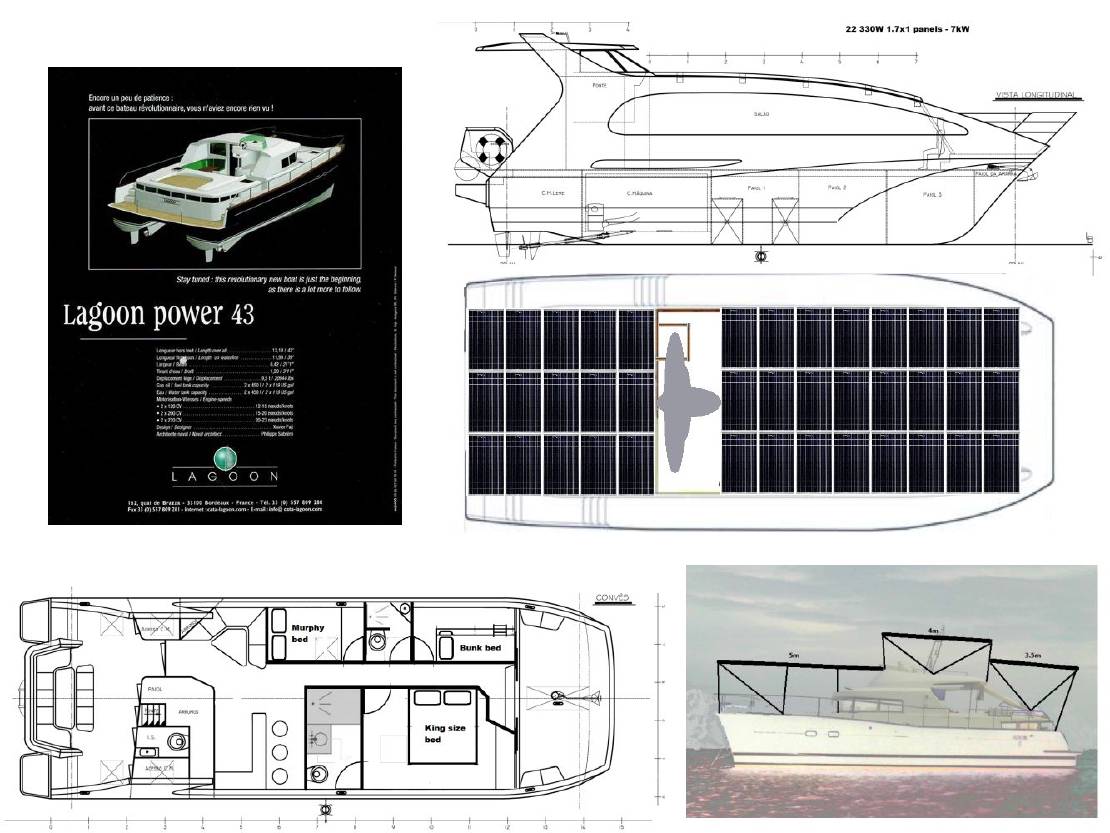
The Search for the Ideal Boat for Refit to Electric Propulsion
Here is a summary of my research, readings and thoughts on the type of boat that could serve as a starting point for our project. I have spent time …
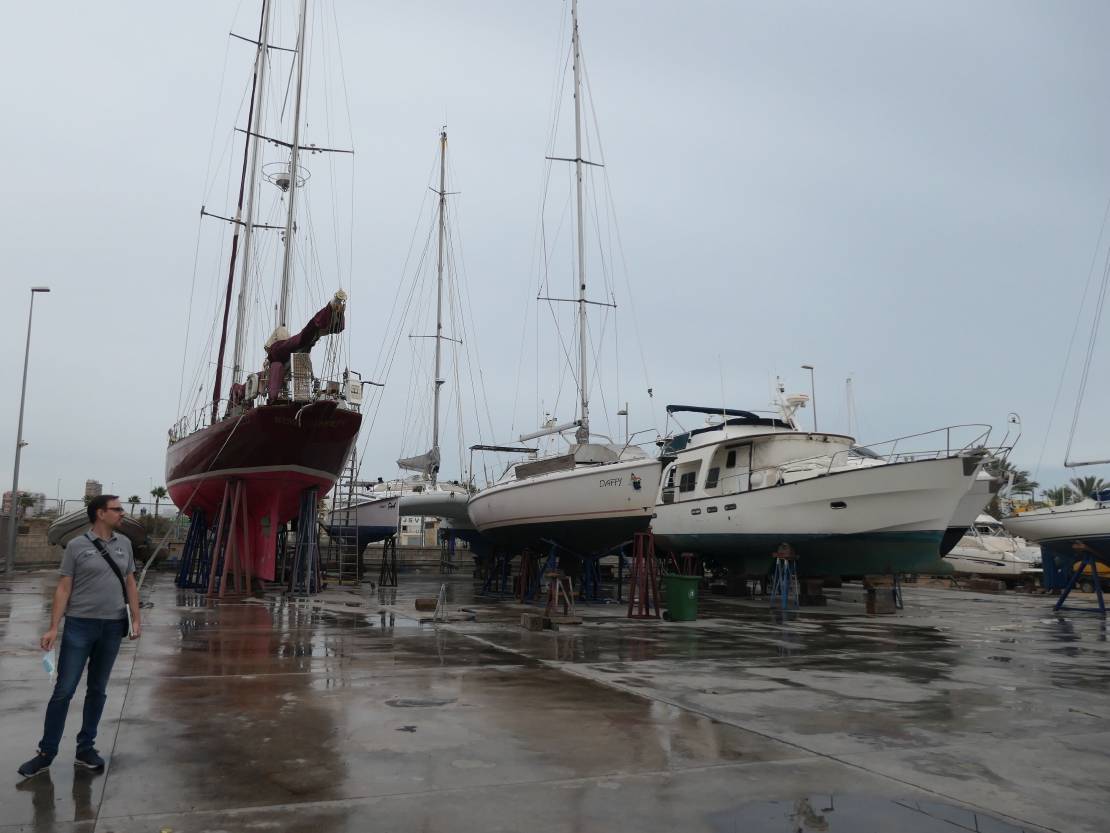
Dean Jag 530 wreck intrigues us (see the article: The Search for the Ideal Boat for Refit to Electric Propulsion) and getting no answer to our emails, we make several calls to the 360a3 shipyard in Alicante to get more information. It is difficult, we do not speak Spanish and we do not get conclusive answers. We end up deciding that we must go and see it on site, if only to eliminate it from our minds. The price is attractive (50k), but it is a wreck. We are convinced we will see right away that there is a lot of work and that this project is too big for us, on all levels. But how can we be sure? Two arguments push us to this “elimination” trip:
We bought easyJet tickets to Valencia, then drove to Alicante. This is our first trip since the the COVID-19 restrictions. We decided to take the opportunity to go and see another catamaran for sale in the port of Valencia.
The Valencia catamaran is a Fountaine Pajot Cumberland 44 from 2005. She is in good condition, even too good for our project, as her 2 diesel engines have only 2000 hours of operation and the price is above 200k, although negotiable. Her deck configuration is not ideal to support the installation of a a solar panel structure. The flybridge is already very high over the water to put large panels above. Covering the bow is not easy… The deck of the main cabin is lower than the bow deck, so it would be necessary to get the panels higher than both the floor of the flybridge and the ceiling of the main cabin, to reach a standing height under the panels. Otherwise, it would be necessary to give up on a good section of the bow deck. In short, it is possible, but clearly not ideal. Access hatches to the engine compartments are located on the stern deck. I prefer when the engines are accessible from the cabins. This provides better protection for the electric motors and their controllers from the salty air and water splashes. That’s another complication for the electric conversion project.
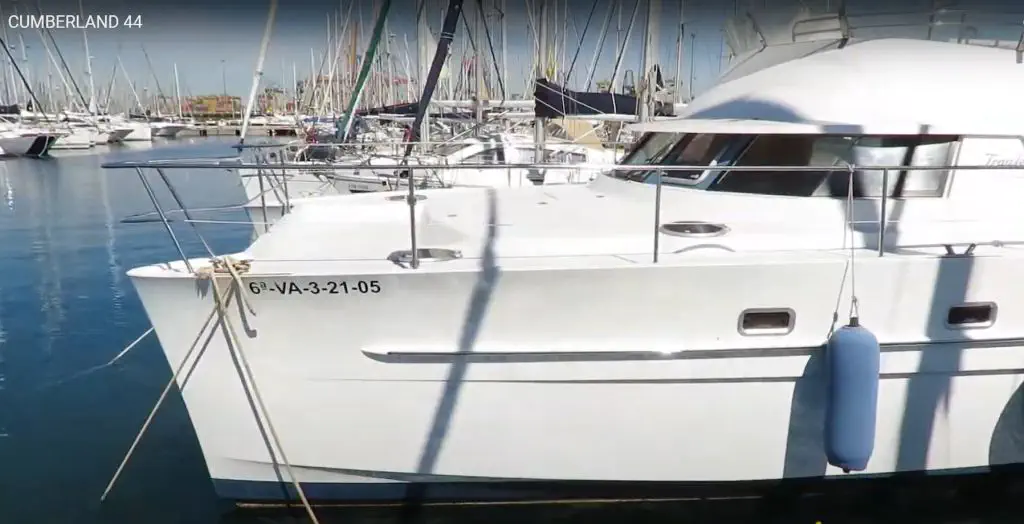
When we arrive at the Alicante shipyard, we discover the Dean Catamarans Jag 530 in a hangar. She is even more imposing than expected. On drydock, on hull supports over a meter high and not floating next to a pontoon, we seem very small next to her. The damage she has suffered is significant, both below the waterline and above. The DC and AC electrical circuits need to be completely redone, as does all the plumbing. During the visit, the list of work grows quickly in our heads, but at the same time, she offers a wonderful space: you can stand up anywhere and you have space around you in each room. Covering it with solar panels is easy to imagine by continuing the height of the main saloon all the way to the bow and by covering the aft flybridge. The flybridge used to have a bimini so we can envision a metal structure in its place to support the solar panels. With the huge diesel engines already removed from the hulls, the space for the batteries and electric motors is perfect and accessible from hatches in the interior floor: it is even better than the common setup of putting the engines under the rear berths. There is plenty of space to install all the electrical systems including solar chargers.
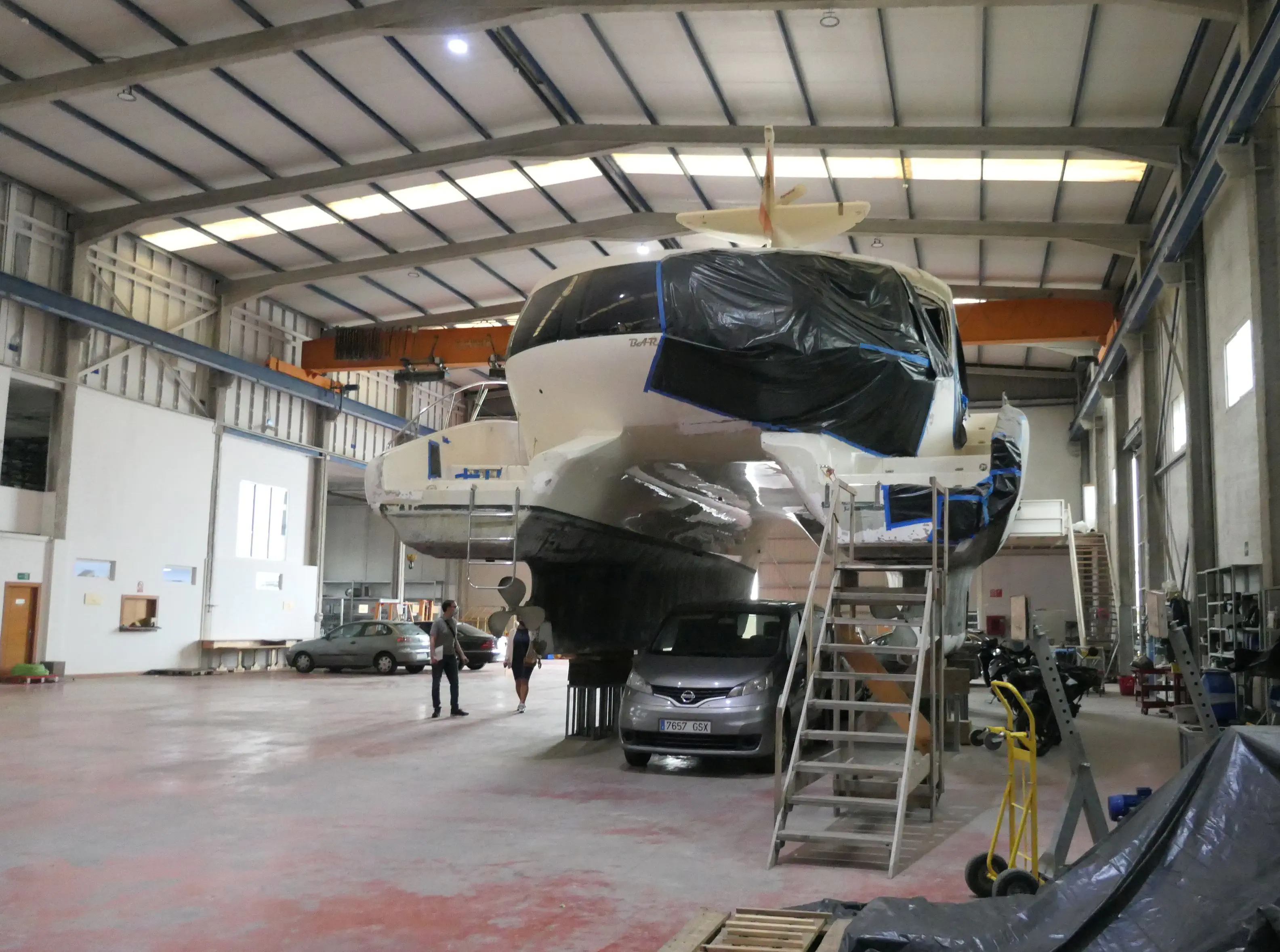
At the end of the visit, we meet with the technical team of the 360a3 shipyard to detail our project and estimate its technical and financial feasibility. We present sketches, our budget for the conversion and the beginning of a document on the objectives (sailing at 5 knots, living in energy autonomy, limiting our environmental impact, etc.). This would be their first experience in electric propulsion conversion and they are showing interest in studying our project. We explain our budget of around 200k and we are told that it seems feasible by adding the purchase price of the wreck. We come out of the meeting with a verbal agreement that we are all up for this project and that we are waiting for the shipyard’s detailed financial estimate.
We can clearly see all the possibilities offered by the very spacious hull of the Jag 530, but estimating the cost of repairs will require a lot of work. Everything needs to be rebuilt on this wreck… and not just a change of propulsion.

Here is a summary of my research, readings and thoughts on the type of boat that could serve as a starting point for our project. I have spent time …
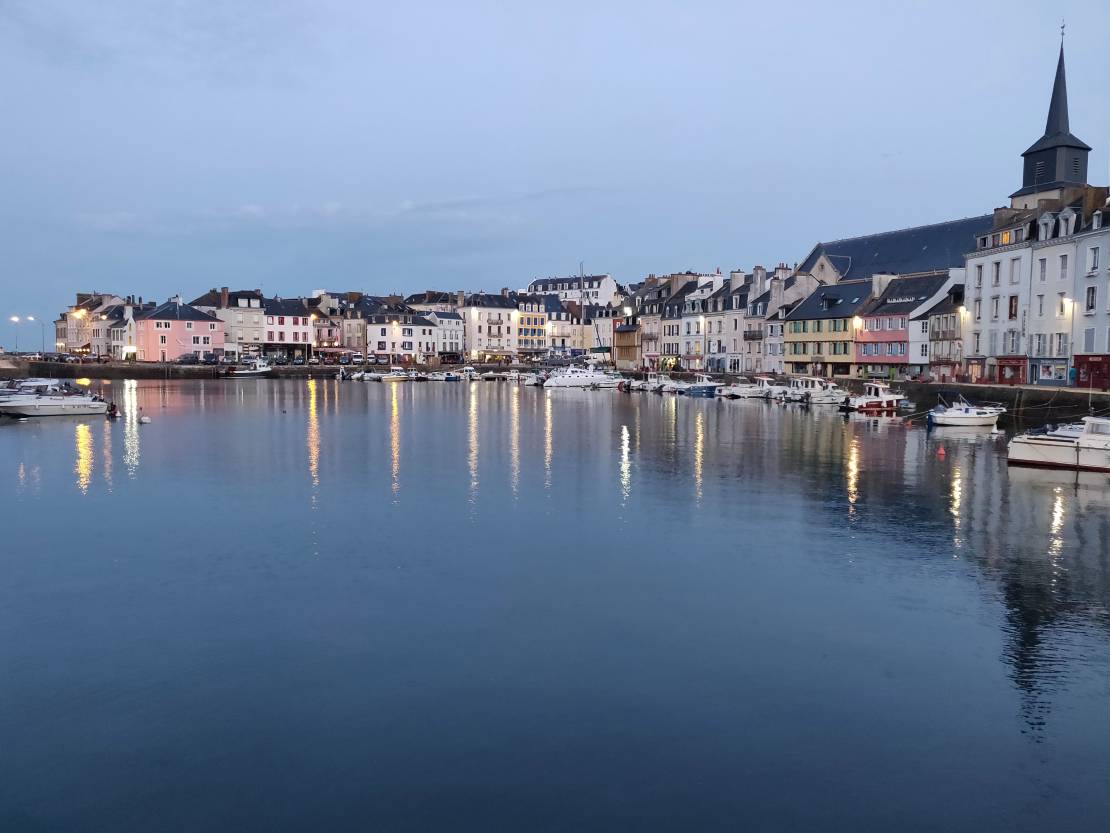
I started thinking about how solar electric boats work and are designed and how to potentially build one, after seeing the performance of the …